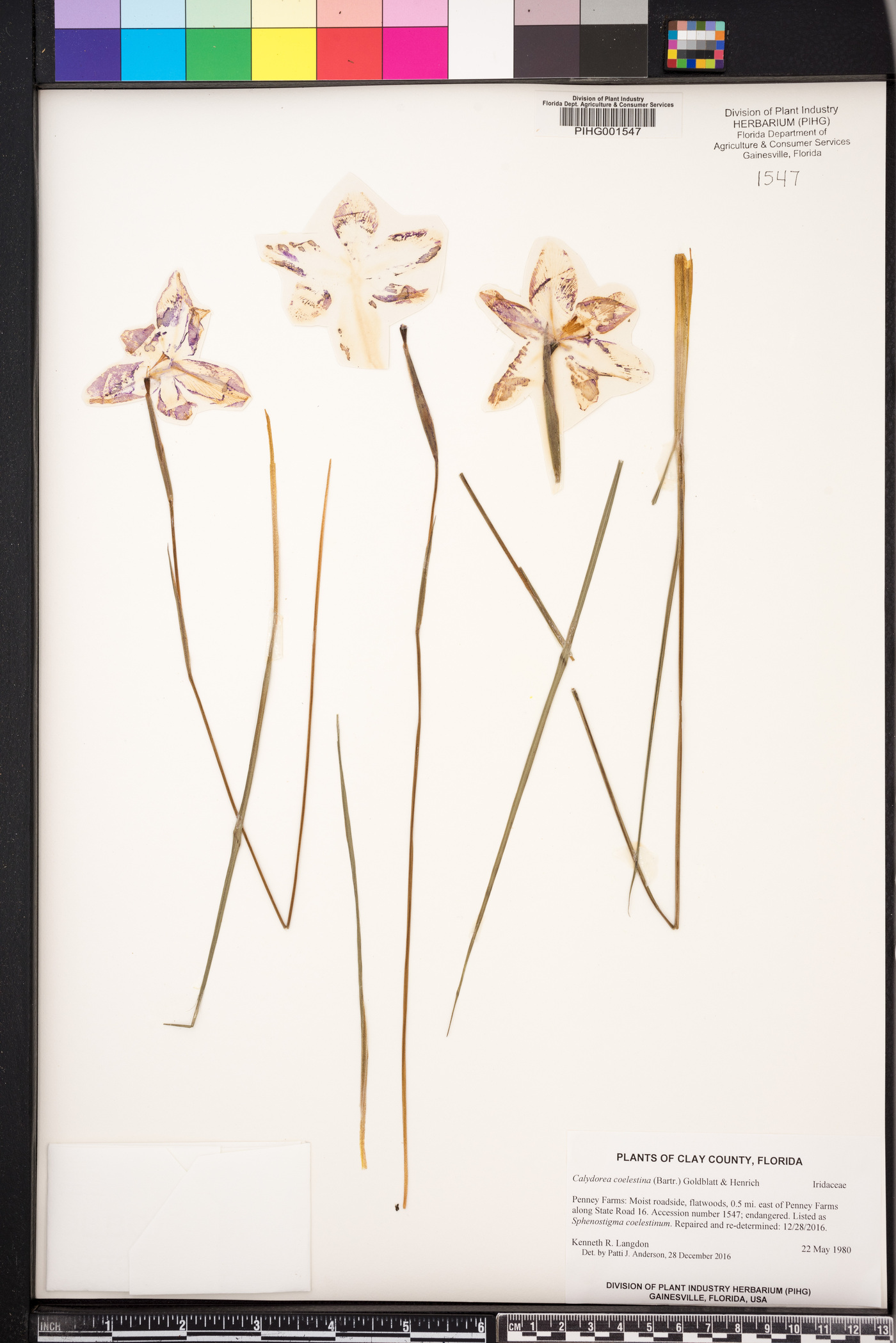Calydorea
|
Family: Iridaceae |
Herbs, perennial, from tunicate, ovoid bulbs; tunic brown, dry, brittle, papery. Stems simple or branched. Leaves few, basal larger; blade pleated, linear-lanceolate. Inflorescences rhipidiate, few-flowered; spathes green, unequal, outer shorter than inner, apex usually brown, acute, dry. Flowers short-lived, erect, actinomorphic; tepals spreading from base, distinct, blue to mauve, ± equal [outer whorl considerably larger than inner]; stamens distinct or filaments variously connate; anthers sometimes connate basally; style eccentric [central] when flower fully open, recurving, slender, branching between middle of filaments and anther apices [branching distal to anthers or 3-lobed apically]; branches [lobes] ascending, undivided, short, stigmatic apically. Capsules ovoid to oblong, cartilaginous, apex truncate. Seeds many, prismatic; seed coat brown. x = 7. The generic position of the single North American species of Calydorea has long been unsettled. Its segregation in the monotypic Salpingostylis (J. K. Small 1931b) is unsatisfactory. This Florida species differs little from those of Mexico, which in turn show strong similarities with others in South America. Some of these species were included by J. G. Baker (1892) in Sphenostigma, but the type of that genus was shown to be a species of Gelasine by P. Ravenna (1977), who then placed the Floridian and Mexican species that had been referred to Sphenostigma in Cardiostigma. P. Goldblatt and J. E. Henrich (1991) preferred to include all these species in a slightly expanded Calydorea, other species of which have the style dividing near the anther bases and the style branches somewhat longer than in the Mexican and Floridian species.
|

